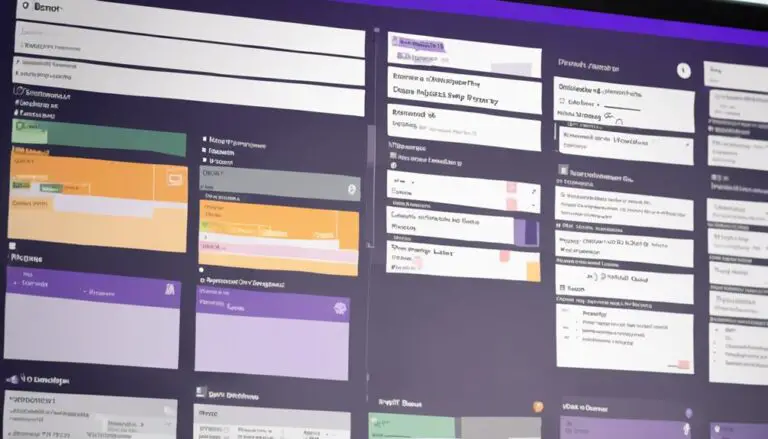Ever wondered how Kanban manages to incorporate story points effectively into its workflow without compromising its core principles? Kanban achieves this by allowing teams to use story points as a measure of effort or complexity while still focusing on visualizing and optimizing their workflow through the use of kanban boards. By incorporating story points, teams can better prioritize and estimate the delivery of work items, leading to improved efficiency and predictability in their kanban process. By effectively balancing kanban team efficiency with story points, teams can make better decisions about when and how to pull work into their workflow, ultimately leading to a smoother and more effective process.
The use of story points in Kanban can offer a unique perspective on task estimation and tracking, adding a layer of detail that complements the system's focus on continuous improvement and workflow visualization.
By exploring the nuances of how story points are utilized within the Kanban framework, you might uncover valuable insights that could enhance your project management strategies and boost team productivity.
Key Takeaways
- Story points aid in accurate task estimation and planning in Kanban.
- They promote better team collaboration and communication.
- Story points optimize task prioritization and workflow efficiency.
- Tracking progress with story points drives continuous improvement and success evaluation.
Understanding Story Points in Kanban
Understanding story points in Kanban is crucial for effectively forecasting work completion and planning based on velocity and backlog estimation. Story points serve as a valuable tool within the Kanban framework, aiding in the estimation of task complexity and assisting teams in predicting the time required for completion. By incorporating story points into Kanban metrics such as cycle time and throughput, teams can better understand their velocity and make informed decisions about sprint planning. This approach helps in avoiding unnecessary confusion and overhead in task estimation, providing a consistent metric for evaluating team performance.
When utilized correctly, story points contribute to a more transparent and efficient workflow. They require teams to be accountable for their estimations and promote a clear understanding of the work at hand. By ensuring that items are right-sized and accurately estimated, Kanban teams can achieve a more predictable flow, enhancing their perception of success and overall productivity. Embracing story points in Kanban fosters a culture of collaboration and continuous improvement, empowering teams to deliver value consistently.
Benefits of Using Story Points
When using story points in Kanban, you gain improved estimation accuracy and enhance team collaboration. These benefits contribute to better planning and smoother workflow management.
Improved Estimation Accuracy
To enhance your team's estimation accuracy in Kanban, utilizing story points shifts the focus from exact time estimates to evaluating tasks based on their relative size and complexity.
- Story points help you avoid the pitfalls of traditional time-based estimates, leading to more accurate predictions of work completion.
- By using story points, you can facilitate better forecasting in Kanban, providing a common measurement unit for evaluating task effort.
- Improved estimation accuracy with story points leads to better planning, prioritization, and overall project management.
Enhanced Team Collaboration
Shifting your focus from exact time estimates to evaluating tasks based on their relative size and complexity with story points in Kanban enhances team collaboration by promoting shared understanding and communication during task estimation.
By encouraging effort alignment and fostering collaborative estimation, story points create a platform for team members to engage in meaningful discussions about task complexities. This shared understanding leads to improved prioritization of tasks, ensuring that everyone is aligned on the work at hand.
Through enhanced team collaboration, Kanban with story points paves the way for increased productivity and delivery predictability. Embracing this approach not only streamlines processes but also nurtures a sense of ownership and teamwork within the group, ultimately driving success.
Implementing Story Points in Workflow
When implementing story points in your Kanban workflow, it's crucial to focus on point estimation techniques and an iterative planning process.
By assigning story points to individual tickets, you can better estimate task complexity and enhance predictability in your planning.
This approach allows for improved visibility and tracking of task estimation, aiding in forecasting work completion.
Point Estimation Techniques
By incorporating story points into your Kanban workflow, you enhance the precision and effectiveness of task estimation and forecasting. Here are three key ways point estimation techniques can benefit your workflow:
- Improved Task Estimation: Story points help in accurately estimating the effort required for each task, leading to better planning and allocation of resources.
- Enhanced Visibility: By utilizing story points, you gain a clearer understanding of the size and complexity of tasks in your workflow, allowing for improved prioritization and decision-making.
- Streamlined Backlog Estimation: Story points aid in predicting completion times for backlog items, facilitating a more efficient and effective backlog management process.
Iterative Planning Process
To effectively implement story points in your Kanban workflow, start by incorporating them into your iterative planning process for estimating task effort. Utilize story points on your Kanban board during sprint planning sessions to assign estimates to tasks based on complexity and effort required.
By breaking down work using story points, teams can better allocate resources and prioritize tasks effectively. Adjust story points as needed during the sprint based on actual effort spent, allowing for continuous improvement in task estimation accuracy.
This iterative approach in Kanban not only aids in optimizing workflow efficiency but also helps in identifying bottlenecks for timely resolution. Embrace the power of story points in your iterative planning to enhance workflow optimization and streamline task execution.
Story Points for Task Prioritization
Prioritize tasks effectively in Kanban by utilizing story points to gauge the complexity and effort required for each item in your workflow. By assigning story points to tasks, you can better understand their estimated complexity and the effort needed. This approach aids in task prioritization, allowing your team to focus on high-value work and address critical tasks promptly.
Here are three key benefits of using story points for task prioritization:
- Optimizing Workflow: Story points help optimize your workflow by providing a clear understanding of task importance and size.
- Enhancing Value Delivery: By focusing on high-value tasks first, you ensure that you deliver the most significant impact to your customers.
- Improving Team Efficiency: Task prioritization using story points leads to informed decisions, boosting team efficiency and productivity.
Incorporating story points into your task prioritization process not only streamlines your workflow but also enhances the overall effectiveness of your team.
Continuous Improvement With Story Points
Transitioning from task prioritization with story points, you can drive continuous improvement within your Kanban process by leveraging the insights gained from tracking progress and measuring improvement over time.
By consistently using story points, you not only enhance your forecasting and planning capabilities but also identify trends and patterns in your work. This tracking allows you to understand your team's capacity better, leading to workflow optimization in Kanban.
Moreover, analyzing historical data through story points empowers you to make informed decisions for process enhancements. Embracing story points for continuous improvement enables you to adapt and evolve your Kanban practices based on real-time feedback and empirical data.
As you delve deeper into the world of story points, remember that each data point is a stepping stone towards refining your processes and achieving operational excellence in Kanban.
Measuring Success With Story Points
When utilizing story points in Kanban, you can effectively gauge success by establishing a common metric for estimating task size and complexity. This standardized estimation method not only helps in measuring progress but also plays a crucial role in improving forecasting accuracy.
By tracking team velocity, you can ensure that the work being done aligns with the team's capacity, leading to more realistic planning and better decision-making. Additionally, integrating story points into Kanban metrics allows for a holistic view of performance, enabling teams to identify areas for improvement and make data-driven adjustments.
This approach not only streamlines processes but also fosters a sense of unity within the team, as everyone is working towards a shared understanding of the work at hand. By embracing story points as a fundamental part of your Kanban process, you can enhance your team's productivity and overall success.
Frequently Asked Questions
How Do You Use Story Points in Kanban?
In Kanban, you use story points for estimation accuracy, sprint planning, team collaboration, continuous improvement, prioritization techniques, scope management, and velocity tracking. They streamline tasks, enhance teamwork, and ensure efficient project progress.
How Do You Use Story Points Effectively?
You use story points effectively in Kanban by focusing on estimation accuracy, planning efficiency, team collaboration, progress tracking, prioritization clarity, stakeholder communication, and continuous improvement. Clear understanding and consistent application enhance workflow predictability.
Do You Use Stories in Kanban?
In Kanban, you can use stories to enhance collaboration and task clarity. Story mapping and backlog grooming aid in task breakdown. While sprint planning isn't typical, continuous delivery and agile methodology promote team efficiency.
How Do You Use Kanban Effectively?
Embrace the power of team collaboration and task prioritization in Kanban. Visualize workflows, set WIP limits, and focus on customer satisfaction. Track cycle time, aim for continuous improvement, and adapt processes for efficiency.
Conclusion
As you continue to implement story points in your Kanban workflow, remember that they're a powerful tool for better task estimation and continuous improvement.
By using story points effectively, you can prioritize tasks more efficiently, measure success accurately, and ultimately improve your team's productivity.
So keep on using story points in your Kanban process, and watch your workflow become even more streamlined and successful.
Keep calm and Kanban on!





